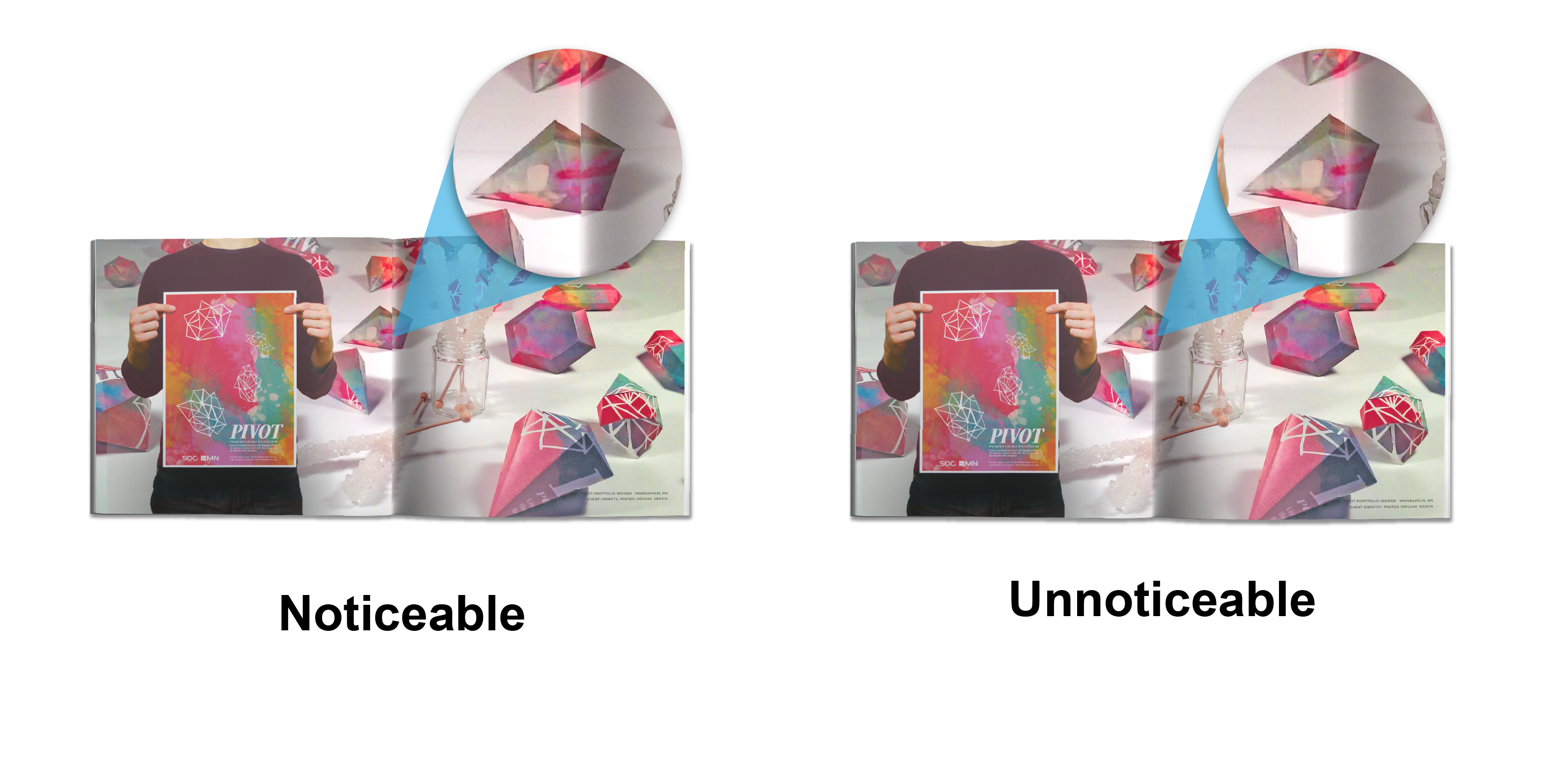Binding File

Binding File
Saddle Stitch
What is Saddle Stitch Printing?
Saddle stitched books are, simply put, folded and stapled together. This is most commonly used for booklets, catalogs, photo books, magazines and calendars.
Products can be saddle stitched along the left edge or top edge, depending on how the project is planned out.
This binding type is the most popular, inexpensive, simple and professional form of binding, which allows us to save you money. A benefit of choosing saddle stitch is that the pages can lay flat and stay open while you are flipping through the pages.
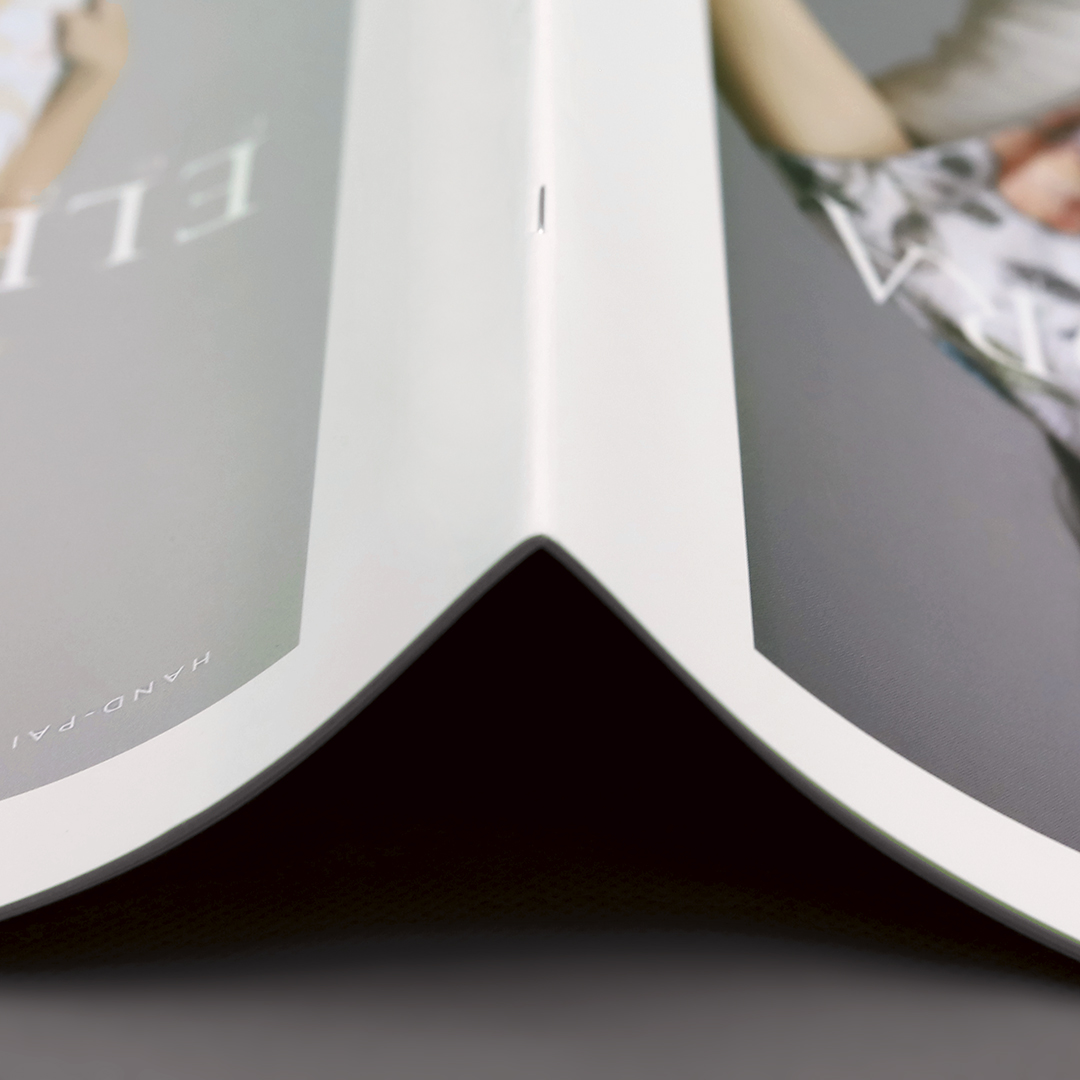
Products can be saddle stitched along the left edge or top edge, depending on how the project is planned out.
This binding type is the most popular, inexpensive, simple and professional form of binding, which allows us to save you money. A benefit of choosing saddle stitch is that the pages can lay flat and stay open while you are flipping through the pages.

How do I count pages for Saddle Stitch binding?
With the saddle stitch method, the pages of the booklet are printed on large sheets of paper and then folded in half, which is why you must have a page count that is evenly divisible by 4. Each sheet of paper will contain 4 of the booklet’s pages.
For example, if you are printing an 8.5” x 11” saddle stitch book, it’s pages and cover would be made from 11” x 17” sheets that are folded in half to the size of 8.5” x 11.”
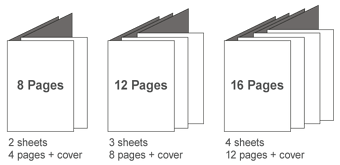
We can print saddle stitch orders that are 8 – 92 pages. In other words, your document (counting the front and back cover) should be one of the following page counts:
8 | 12 | 16 | 20 | 24 | 28 | 32 | 36 40 | 44 | 48 | 52 | 56 | 60 | 64 | 68 | 72 | 76 | 80 | 84 | 88 | 92
When saving your print-ready PDF file, please save one single PDF file which contains your individual pages, including front and back cover, consecutively ordered. For example:

For example, if you are printing an 8.5” x 11” saddle stitch book, it’s pages and cover would be made from 11” x 17” sheets that are folded in half to the size of 8.5” x 11.”

We can print saddle stitch orders that are 8 – 92 pages. In other words, your document (counting the front and back cover) should be one of the following page counts:
8 | 12 | 16 | 20 | 24 | 28 | 32 | 36 40 | 44 | 48 | 52 | 56 | 60 | 64 | 68 | 72 | 76 | 80 | 84 | 88 | 92
When saving your print-ready PDF file, please save one single PDF file which contains your individual pages, including front and back cover, consecutively ordered. For example:

What is Page Creep?
When saddle stitching, there is a term called “page creep,” which refers to the inner-most pages being pushed out further than the pages closer to the outside of the booklet. This is most noticeable when there is a large number of pages or thicker paper. Generally, booklets under 40 pages total will not require adjustments for creep.

Diagram A below shows how the pages stick out (creep) from the book and Diagram B shows how the pages are trimmed after being stitched. PrintingCenterUSA makes every effort to adjust for creep when necessary.

Diagram A below shows how the pages stick out (creep) from the book and Diagram B shows how the pages are trimmed after being stitched. PrintingCenterUSA makes every effort to adjust for creep when necessary.
Perfect Binding
What is Perfect Bound Printing?
Perfect bound books are inexpensive and provide a durable, high quality, professional book. Perfect bound is the ideal choice for books with higher page counts (28 pages up to 2 inches thick). Perfect binding gives you a soft cover bound to the individual inside pages with strong, yet flexible PUR glue, creating a printable, square spine.
During the perfect binding process, printed sheets are gathered into a book, one on top of the other, the edges are ground off, the book is glued into a wraparound cover, then trimmed to size. Because of this gluing process, creating the square spine, the pages do not lay flat while you are flipping through them.
Perfect bound book printing is great for directories, magazines, manuals, year books or any type of booklet that has many pages. Our soft cover perfect bound books provide a high quality and professional look that can’t be matched.
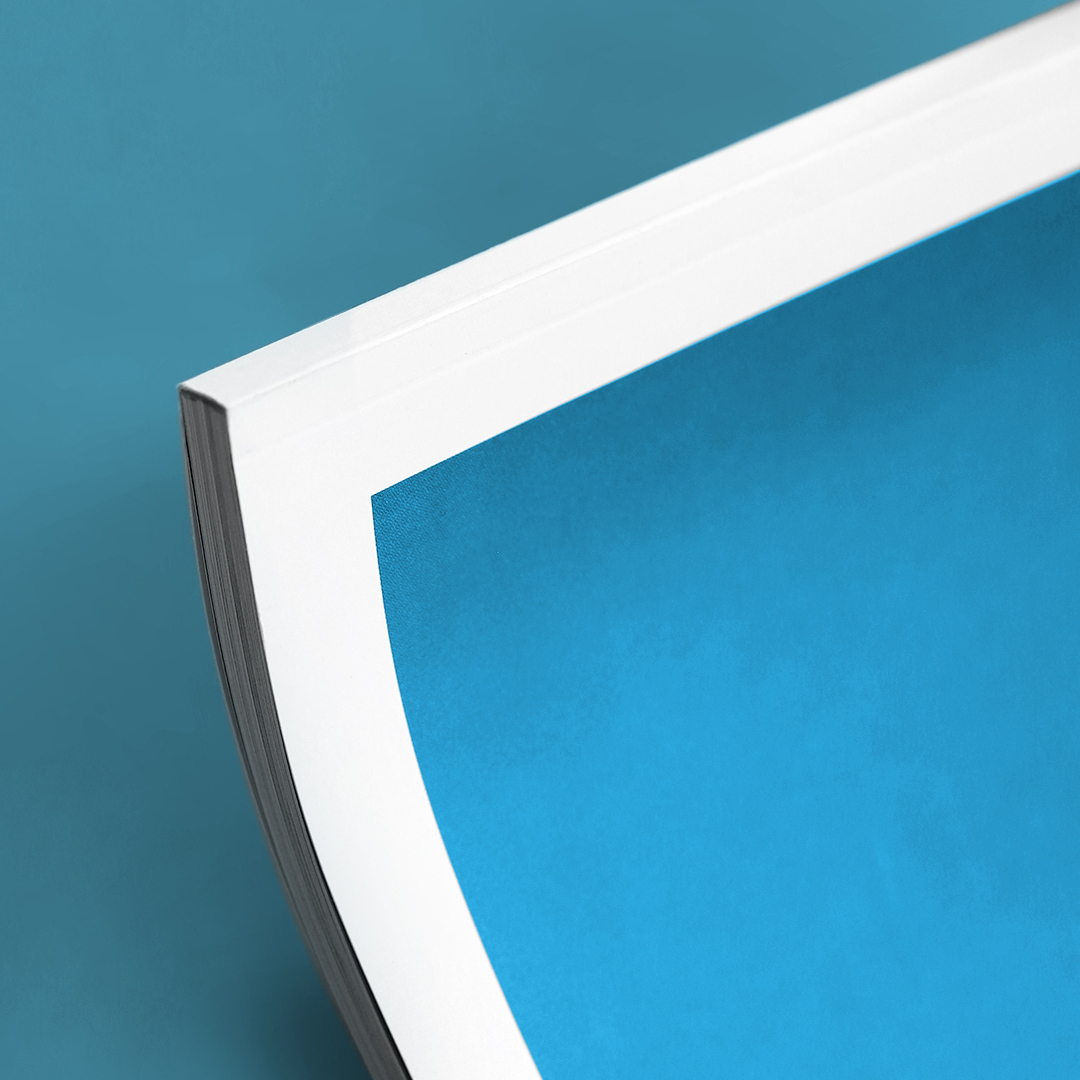
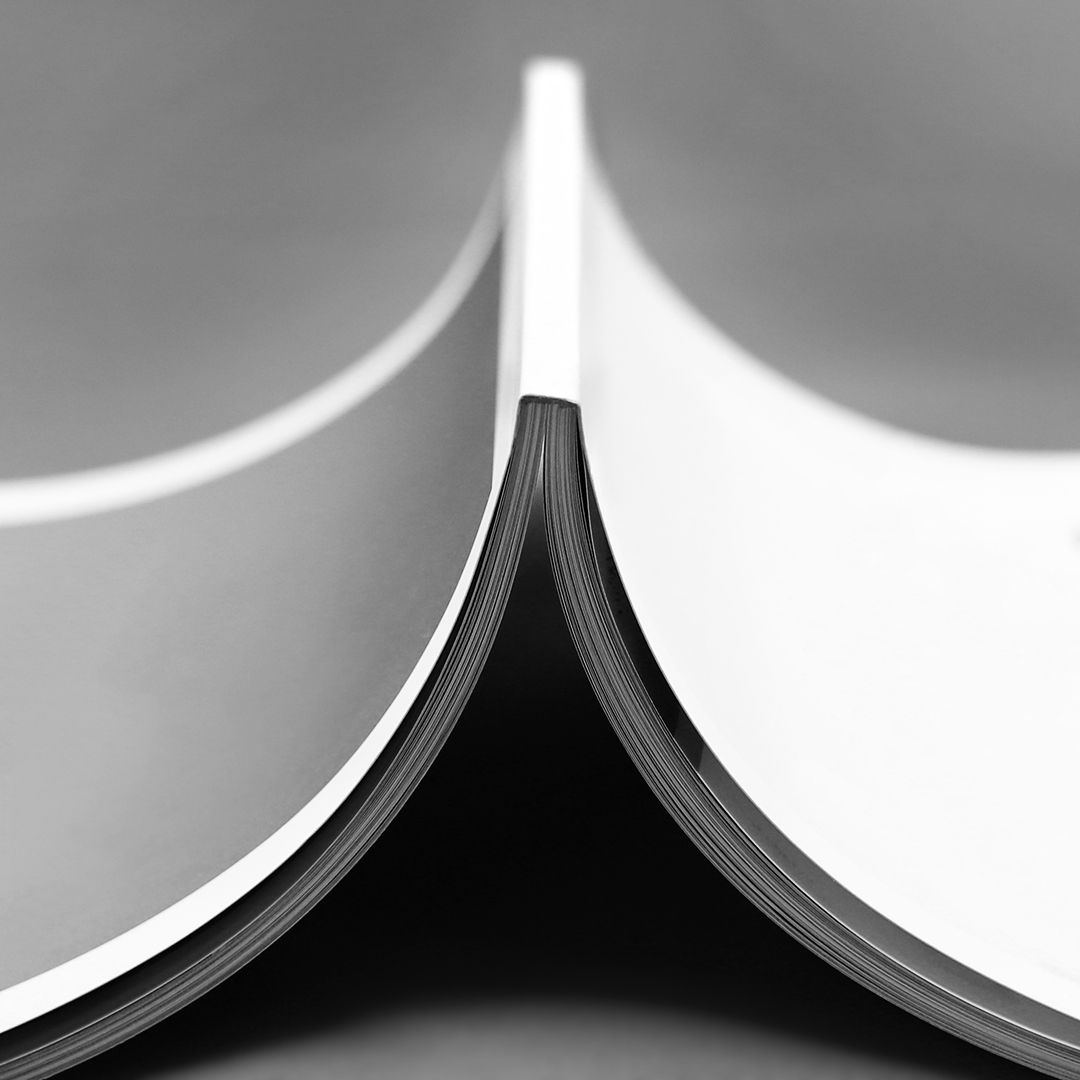
During the perfect binding process, printed sheets are gathered into a book, one on top of the other, the edges are ground off, the book is glued into a wraparound cover, then trimmed to size. Because of this gluing process, creating the square spine, the pages do not lay flat while you are flipping through them.
Perfect bound book printing is great for directories, magazines, manuals, year books or any type of booklet that has many pages. Our soft cover perfect bound books provide a high quality and professional look that can’t be matched.


How do I count pages for perfect binding?
The minimum number of pages is 28 pages to 2” thick maximum. 2 page increments are required when ordering.


When saving your print-ready PDF file, please save one single PDF file which contains your individual pages, including front and back cover, consecutively ordered. For example:



When saving your print-ready PDF file, please save one single PDF file which contains your individual pages, including front and back cover, consecutively ordered. For example:

What are gutters?
Because perfect bound books cannot lay completely flat without breaking, there is a portion of each inside page that will lose visibility into the spine. This inside gutter can take up between ¼” and 3/8” of each page. Be mindful of this while designing and add an extra ½” cushion to the binding-side margins of each page of your perfect bound book. For more about setting up your margin and safety lines, click here.
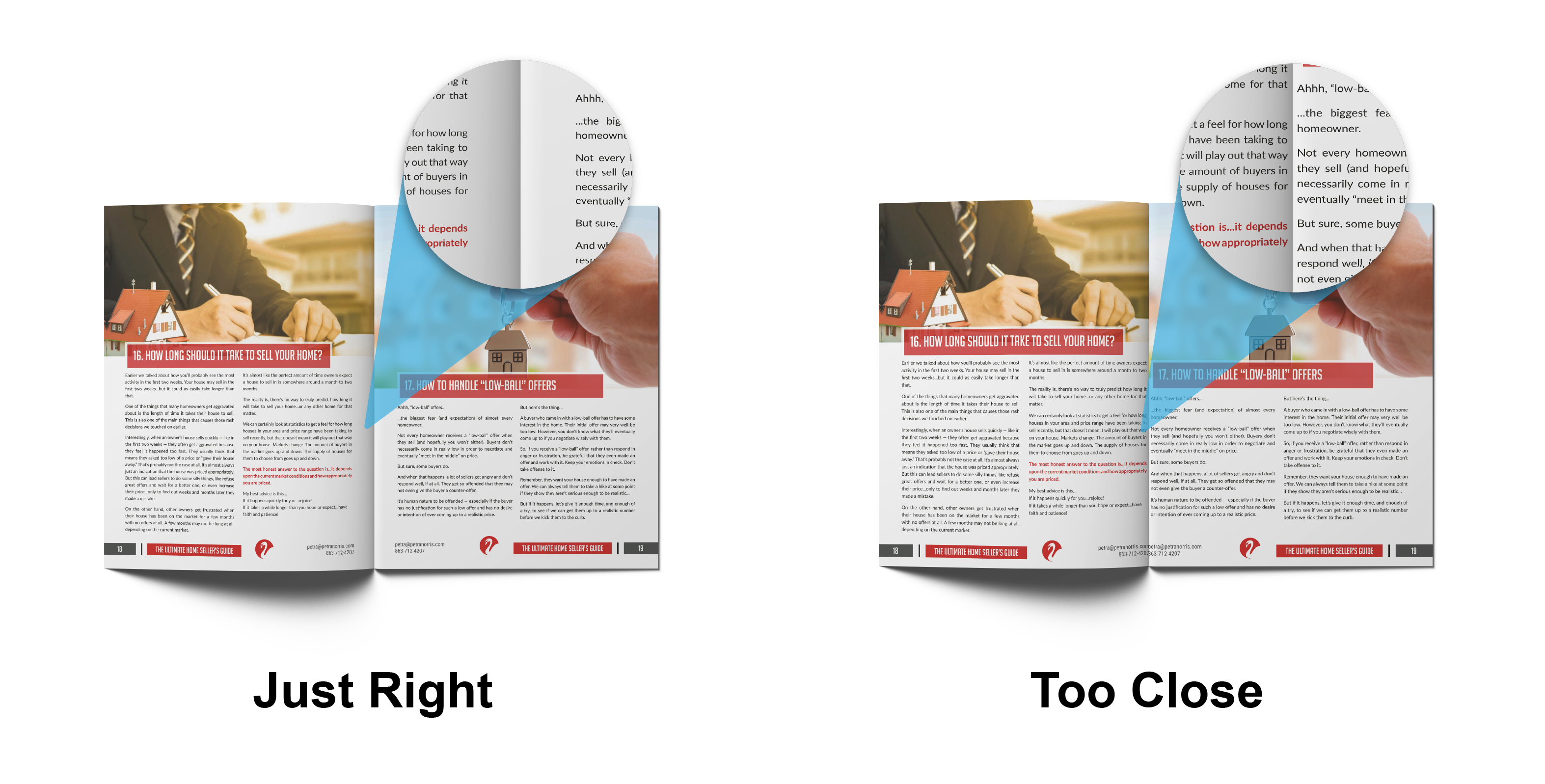
Note: If you are adding page numbers to your project, then do not put them on the inside of the pages close to the spine. You will risk losing visibility.

Note: If you are adding page numbers to your project, then do not put them on the inside of the pages close to the spine. You will risk losing visibility.
What are crossovers?
How can I determine my spine width?
A unique feature of perfect bound books is the ability to design the spine if it is larger than 1/8th inch. You can keep it a solid color, add text or have one continuous image covering the front cover across to the back cover. Determining your spine width depends on your number of pages and the paper stock you have selected.
Download Perfect Bound Spine Calculator
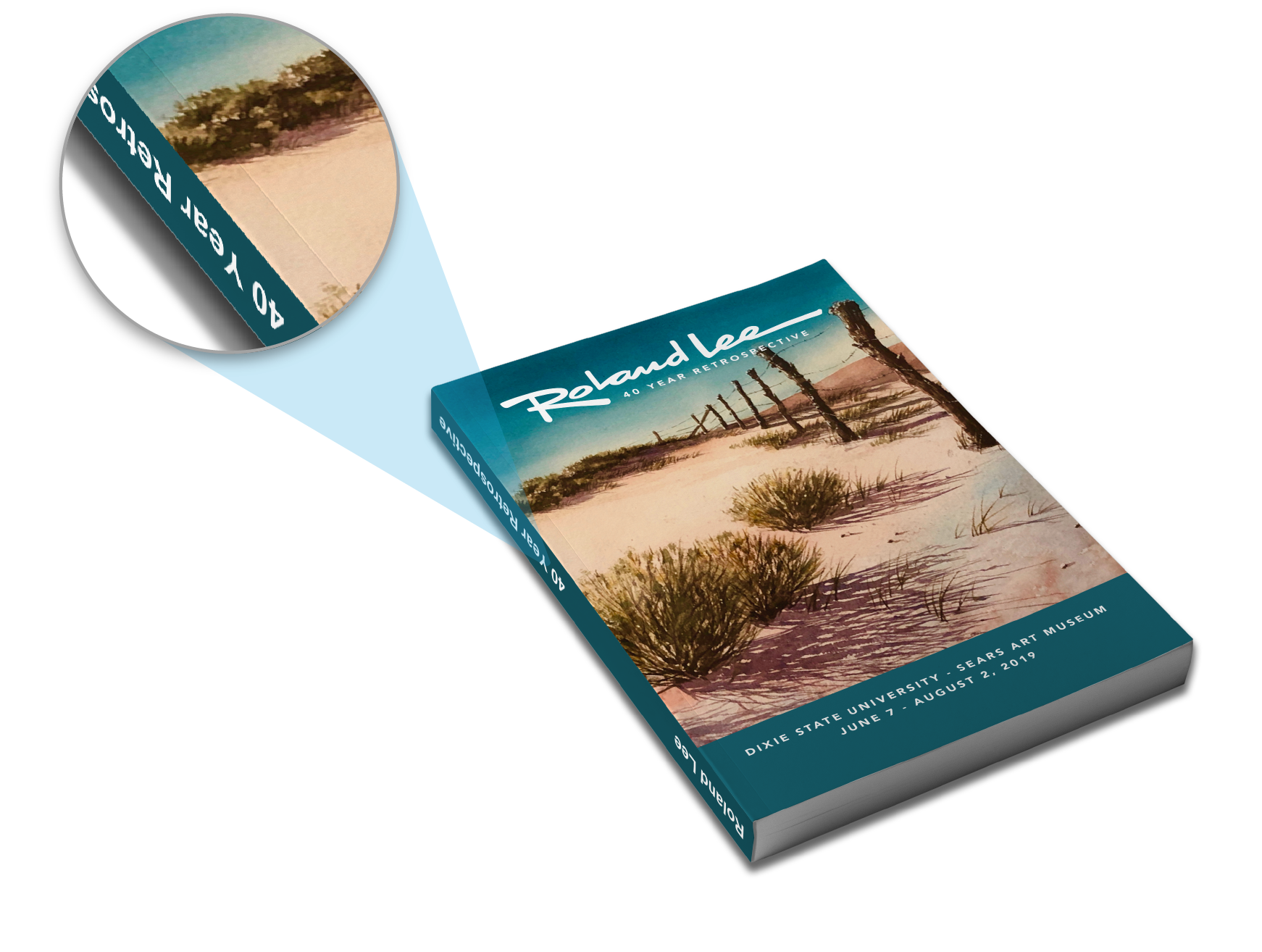
Download Perfect Bound Spine Calculator

Spiral
What is Spiral Bound Printing?
Spiral bound printing is a continuous coil of plastic looping through a row of punched holes at the edge of the printed piece. The binding can be on the left edge or top edge of the project, depending on how the project is designed. Spiral bound coils are available in different colors and sizes. You cannot print on the spine or add/remove pages once a spiral bound book is complete. Spiral bound book printing is great for manuals, directories, annual reports, calendars and many other types of products. Spiral binding can be up to 2 3⁄4“ thick.
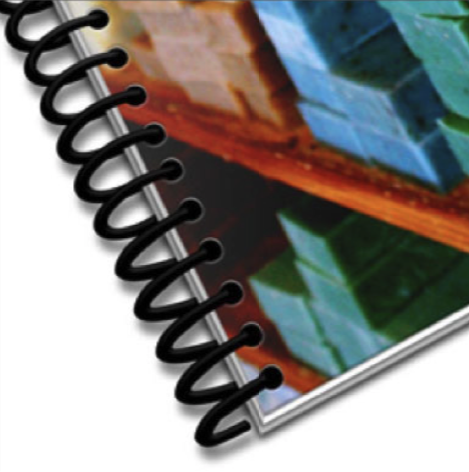

How should I count my pages for spiral binding?
What should my margins be for spiral binding?
You must leave extra space for the hole drilling on the binding-side of your Spiral or Wire-O booklet. Set your binding-side margins to be 7/8”. Refer to our free downloadable templates for a design guide.
Wire-O
What is Wire-O Bound Printing?
Wire-O binding is similar to Spiral binding. It is a metal coil that passes through a row of punched holes at the edge of the printed piece. The pages will lay flat or wrap back around themselves. The binding can be on the left edge or top edge of the project, depending on how the project is designed. Wire-o bound books are a series of parallel wire loops attached along a wire. Wire-o binding can be 1 1⁄4“ thick. Wire-O binding is great for Calendars, Directories, Annual Reports, and many other types of products.
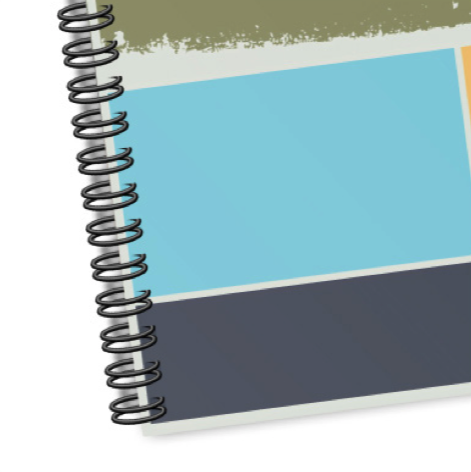

How should I count pages for wire-o binding?
What should my margins be for wire-o binding?
You must leave extra space for the hole drilling on the binding-side of your Spiral or Wire-O booklet. Set your binding-side margins to be 7/8”. Refer to our free downloadable templates for a design guide.

